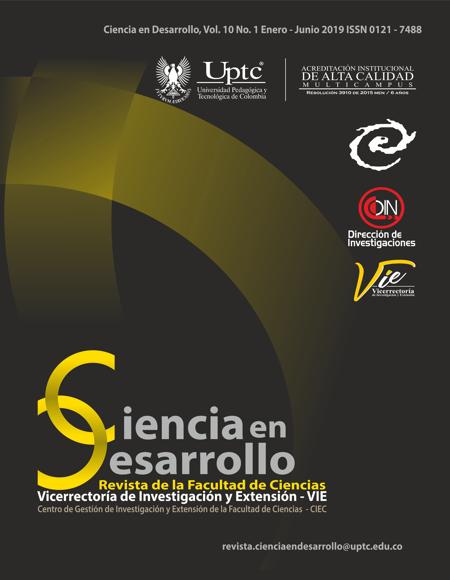Liquid-vapor equilibrium for the Water-Acetone-Butanol-Ethanol quaternary system at Low Pressures

Abstract
Due to the ocurrence of a non ideal behavior of ethanol, butanol and acetone in aqueous solutions, a method to predict those properties in mixture that depend on the composition, temperature and pressure, especially the activity and the fugacity, is outlined in this work. These properties are very important for estimating equilibrium constants, constants of transfer speed and chemical reaction, sizing and design of process equipment. Currently, biobutanol is considered a substitute for bioethanol as a biofuel, presenting advantages, such as: higher heat capacity and lower vapor pressure. It is obtained from the fermentation of Acetone-Butanol-Ethanol (ABE), where its major products are acetone, butanol and ethanol in a molar ratio of 3: 6: 1, respectively. Therefore, the liquid-vapor equilibrium for the quaternary system water-acetone- butanol-ethanol was calculated at reduced pressures of 0.1, 0.5 and 1 kPa, with the purpose of evaluating the behavior of the azeotropes (water-butanol and water-ethanol), which is a key issue in the application of a separation process. The Non Random Two Liquid model (NRTL) was used to calculate the activity coefficient of the components in the liquid phase, the virial equations to calculate the fugacity coefficient of the components in the vapor phase and the Rachford and Rice algorithm for the dew temperature. In this way, it could be demonstrated that at low pressures the azeotrope formed between water and butanol slighly disappears while the pressure is going down. Therfore, it is recommended by using a pressure of 0.1 kPa for vacuum distillation, while 0.5 kPa for pervaportation. These values depend on the separation system stability (membranes in case of pervaporation) and the process economical balance.Keywords
Butanol, Activity, fugacity, azeotrope, quaternary system
References
- P.H. Pfromm, V. Amanor-Boadu, R. Nelson, P. Vadlani, R. Madl, “Bio-butanol vs. bio-ethanol: A technical and economic assessment for corn and switchgrass fermented by yeast or Clostridium acetobutylicum”, Biomass Bioenerg, vol. 34, pp. 515-524, 2010. 10.1016/j.biombioe.2009.12.017. DOI: https://doi.org/10.1016/j.biombioe.2009.12.017
- J.A. Moreno, J.A. Cubillos, "Biobutanol Como Combustible: Una Alternativa Alternativa Sustentable", Investigación Joven, vol.4, pp. 45–50, 2017
- C. Jin, M. Yao, H. Liu, C.F.F. Lee, J. Ji, “Progress in the production and application of n-butanol as a biofuel”, Renew. Sustain. Energ. Rev., vol. 15, pp. 4080-4106. 2011. 10.1016/j.rser.2011.06.001. DOI: https://doi.org/10.1016/j.rser.2011.06.001
- J. Zhang, L. Yu, M. Lin, Q. Yan, S.T. Yang, “n-Butanol production from sucrose and sugarcane juice by engineered Clostridium tyrobutyricum overexpressing sucrose catabolism genes and adhE2”, Bioresour. Technol., vol. 233, pp. 51–57, 2017. 10.1016/j.biortech.2017.02.079. DOI: https://doi.org/10.1016/j.biortech.2017.02.079
- X. Kong, A. He, J. Zhao, H. Wu, J. Ma, C. Wei, W. Jin, M. Jiang, “Efficient acetone-butanol-ethanol (ABE) production by a butanol-tolerant mutant of Clostridium beijerinckii in a fermentation-pervaporation coupled process”, Biochem. Eng. J., vol. 105, pp. 90–96, 2016. 10.1016/j.bej.2015.09.013. DOI: https://doi.org/10.1016/j.bej.2015.09.013
- N. Abdehagh, F.H. Tezel, J. Thibault, “Separation techniques in butanol production: Challenges and developments”, Biomass Bioenerg., vol. 60, pp. 222–246, 2014. 10.1016/j.biombioe.2013.10.003. DOI: https://doi.org/10.1016/j.biombioe.2013.10.003
- I. Patraşcu, C.S. Bîldea, A.A. Kiss, “Eco-efficient butanol separation in the ABE fermentation process”, Sep. Purif. Technol., vol. 177, pp. 49–61, 2017. 10.1016/j.seppur.2016.12.008. DOI: https://doi.org/10.1016/j.seppur.2016.12.008
- J.A. Cubillos, F. Bustamante, A. Acosta, "Modelación y simulación de un pervaporador acoplado a un proceso de sacarificación-fermentación para la producción de etanol", Rev. Fac. Ing. vol. 24, pp. 51-68, 2015. 10.19053/01211129.3848. DOI: https://doi.org/10.19053/01211129.3848
- R.H. Perry, “Perry’s Chemical Engineers' Handbook”, McGraw-Hill: New York, 1997, tomo IV, sección 17.
- G. Dalle Ave, T.A. Adams, “Techno-economic comparison of Acetone-Butanol-Ethanol fermentation using various extractants”, Energy Conv. Manag., vol. 156, pp. 288–300, 2018. 10.1016/j.enconman.2017.11.020. DOI: https://doi.org/10.1016/j.enconman.2017.11.020
- E.A. Crespo, L.P. Silva, M.A.R. Martins, L. Fernandez, J. Ortega, O. Ferreira, G. Sadowski, C. Held, S.P. Pinho, J.A.P. Coutinho, “Characterization and Modeling of the Liquid Phase of Deep Eutectic Solvents Based on Fatty Acids/Alcohols and Choline Chloride”, Ind. Eng. Chem. Res., vol. 56, pp. 12192–12202, 2017. 10.1021/acs.iecr.7b02382. DOI: https://doi.org/10.1021/acs.iecr.7b02382
- E.J. Henley, J.D. Seader, “Equilibrium-Stage Separation Operations in Chemical Engineering”, John Wiley & Sons, New York, 1981, pp. 212-215.
- W. Kaminski, A. Górak, A. Kubiczek, “Modeling of liquid-liquid equilibrium in the quinary system of water, acetone, n-butanol, ethanol, and ionic liquid”, Fluid Phase Equilib., vol. 384, pp. 114–121, 2014. 10.1016/j.fluid.2014.10.017. DOI: https://doi.org/10.1016/j.fluid.2014.10.017
- J.P.M. Trusler, “The virial equation of state”, Exp. Thermodyn.,vol. 5, pp. 35–74, 2000. 10.1016/S1874-5644(00)80014-4. DOI: https://doi.org/10.1016/S1874-5644(00)80014-4
- G.W. Thomson, “The antoine equation for vapor-pressure data”, Chem. Rev., vol 38, pp. 1–39, 1946. 10.1021/cr60119a001. DOI: https://doi.org/10.1021/cr60119a001
- G. Reklaitis, “Balance De Materia Y Energia”, Interameri, Mexico, D.F., 1986. Pp 619-622.
- H.B. Callen, “Thermodynamics and an Introduction to Thermostatistics”, John Wiley & Sons, New York, 1995, pp. 11-212
- B.E. Poling, J.M. Prausnitz, J.P. O’Connell, “The properties of gases & liquids”, McGraw-Hill, 1988. Pp 8.1-8.204.
- S.C. Chapra, R.P. Canale, “Métodos Matemáticos Para Ingenieros”, McGraw-Hill, 2006, pp. 90-95.
Downloads
Download data is not yet available.